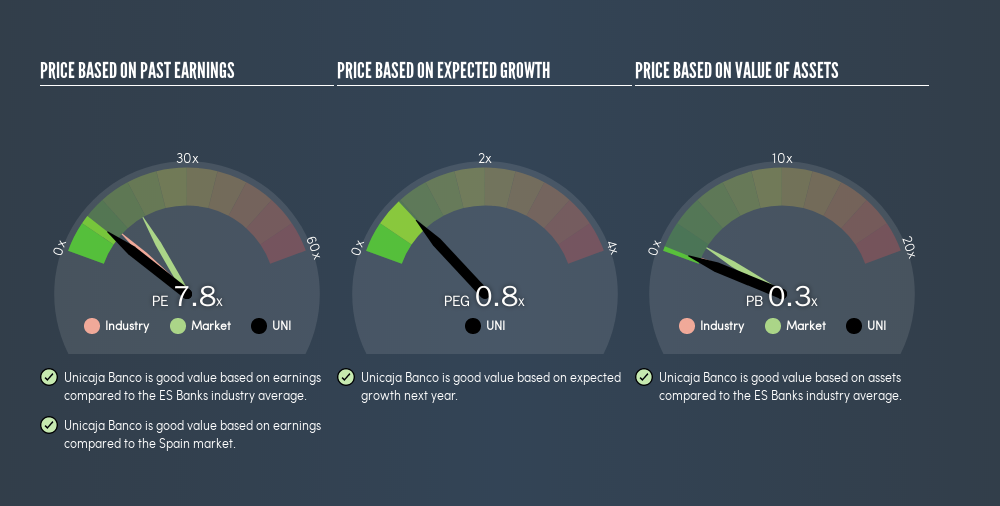Want To Invest In Unicaja Banco, S.A. (BME:UNI) Today? Read This First
Want to participate in a short research study? Help shape the future of investing tools and you could win a $250 gift card!
Unicaja Banco, S.A. (BME:UNI) is considered a high-growth stock, but its last closing price of €0.76 left some investors wondering if this high future earnings potential can be rationalized by its current price tag. Below I will be talking through a basic metric which will help answer this question.
Check out our latest analysis for Unicaja Banco
Has the UNI train has slowed down?
Investors in Unicaja Banco have been patiently waiting for the uptick in earnings. If you believe the analysts covering the stock then the following year will be very interesting. The consensus forecast from 10 analysts is certainly positive with earnings per share estimated to surge from current levels of €0.0980 to €0.127 over the next three years. On average, this leads to a growth rate of 10% each year, which signals a market-beating outlook in the upcoming years.
Is UNI's share price justifiable by its earnings growth?
Unicaja Banco is trading at quite low price-to-earnings (PE) ratio of 7.76x. This tells us the stock is undervalued relative to the current ES market average of 17.31x , and undervalued based on its latest annual earnings update compared to the Banks average of 9.69x .

We already know that UNI appears to be undervalued based on its PE ratio, compared to the industry average. But, since Unicaja Banco is a high-growth stock, we must also account for its earnings growth by using calculation called the PEG ratio. A PE ratio of 7.76x and expected year-on-year earnings growth of 10% give Unicaja Banco a very low PEG ratio of 0.77x. So, when we include the growth factor in our analysis, Unicaja Banco appears relatively cheap , based on the fundamentals.
What this means for you:
UNI's current undervaluation could signal a potential buying opportunity to increase your exposure to the stock, or it you're a potential investor, now may be the right time to buy. However, basing your investment decision off one metric alone is certainly not sufficient. There are many things I have not taken into account in this article and the PEG ratio is very one-dimensional. If you have not done so already, I highly recommend you to complete your research by taking a look at the following:
- Financial Health: Are UNI’s operations financially sustainable? Balance sheets can be hard to analyze, which is why we’ve done it for you. Check out our financial health checks here.
- Past Track Record: Has UNI been consistently performing well irrespective of the ups and downs in the market? Go into more detail in the past performance analysis and take a look at the free visual representations of UNI's historicals for more clarity.
- Other High-Performing Stocks: Are there other stocks that provide better prospects with proven track records? Explore our free list of these great stocks here.
We aim to bring you long-term focused research analysis driven by fundamental data. Note that our analysis may not factor in the latest price-sensitive company announcements or qualitative material.
If you spot an error that warrants correction, please contact the editor at editorial-team@simplywallst.com. This article by Simply Wall St is general in nature. It does not constitute a recommendation to buy or sell any stock, and does not take account of your objectives, or your financial situation. Simply Wall St has no position in the stocks mentioned. Thank you for reading.
About BME:UNI
Solid track record with adequate balance sheet and pays a dividend.
Similar Companies
Market Insights
Community Narratives



